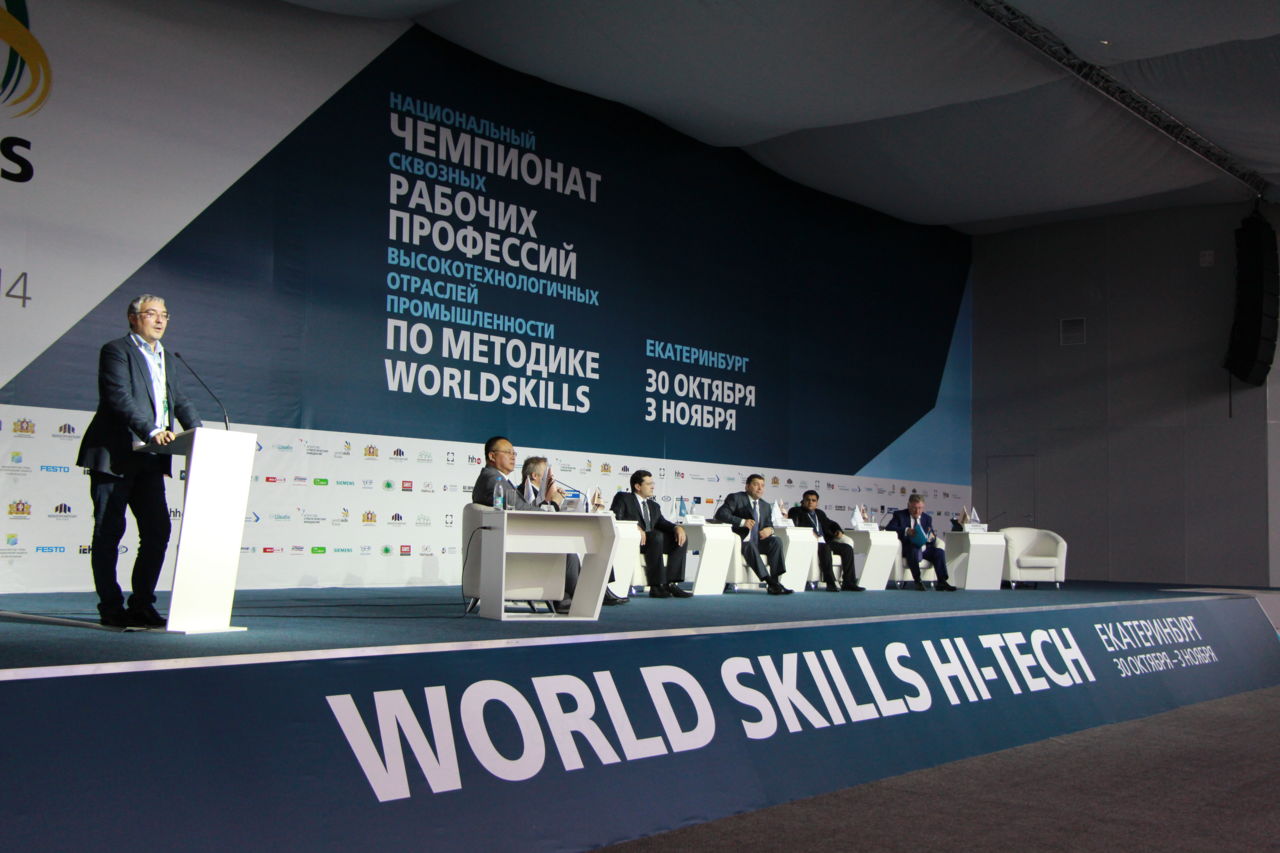13 November 2014
“Competence Growth 2035” at the WorldSkills Russia Hi-Tech Competition

In Yekaterinburg, on 31 October, during the WorldSkills Russia Hi-Tech Competition, a plenary session entitled "Competence Growth 2035" was organized by the Agency for Strategic Initiatives (ASI) in collaboration with the Vedomosti newspaper. Key topics of discussion were the development of priority industries, global trends and prospective strategies, and a system of training skilled workers aimed at making them more competitive in the near future.
Chief Executive Officer of WorldSkills International, David Hoey, noted that today the field of high technology is becoming increasingly inseparable from occupational and educational standards.
First Deputy Minister of Industry and Trade of the Russian Federation, Gleb Nikitin, spoke generally on the topic: “We need to understand that to prepare children with the expectation of future competence, the industry of the future must be made up of a new highly qualified workforce." He noted that high school education should be linked to the needs of companies and industry. Providing future professionals with interesting and challenging work will minimize the outflow of personnel from the country.
India, which ranks second in the world after China in terms of population, views aging populations in developed countries as a unique opportunity to provide employment to its own citizens during this time of global automation. Mohan Reddy, Associate - Standards and QA, National Skill Development Corporation said, “By 2021, more than half of the population will be younger than 20 years old. In the near future, we will require no less than 350 million skilled workers.”
The economy is currently undergoing decentralization, large industrial complexes and core enterprises are thinning out, and the use of unmanned vehicles is spreading. Creating automated production without human intervention is an inevitable development. Different countries factor in the reduction of manual labour in industrial production to their development strategies in different ways. Many Chinese companies announce that they will soon replace their human workforce with robots – machines that can be coordinated with each other without human intervention.